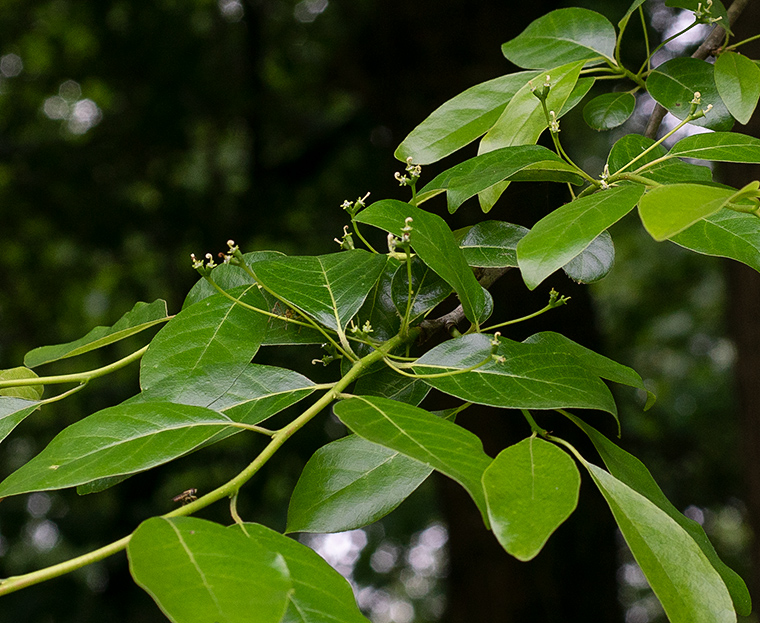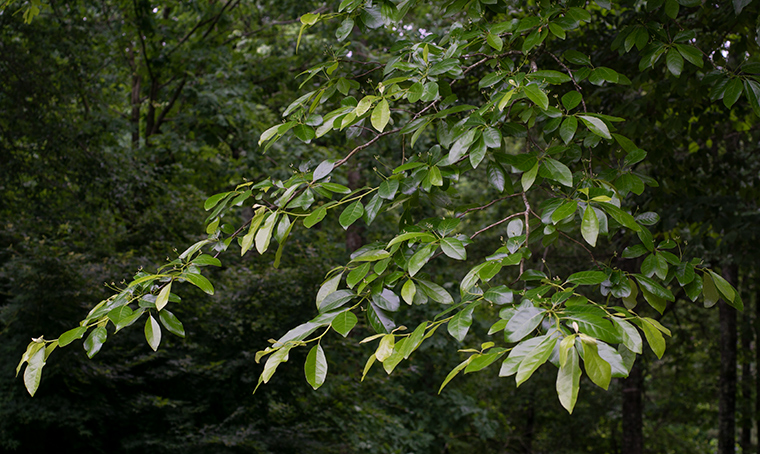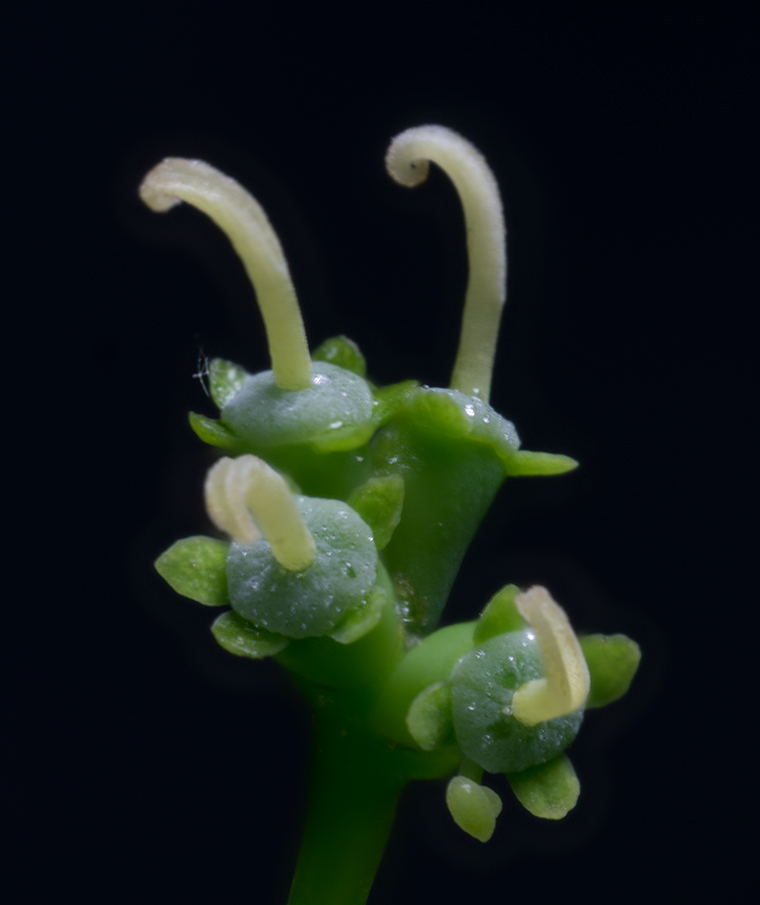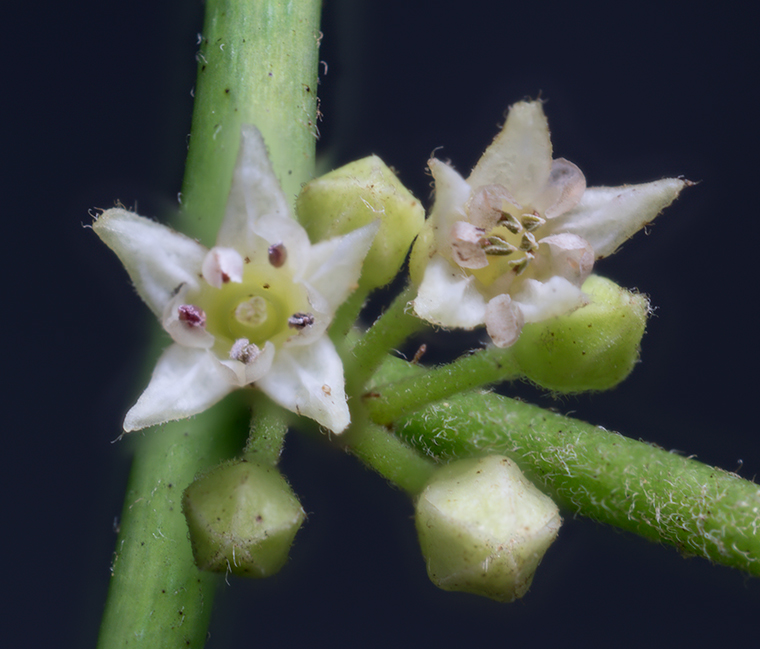Here is a branch of a marvelous tree in our neighbor’s yard across the road from our house. It is in full bloom! What? You can’t see the flowers?
 Look a bit more closely. The flowers are on short stalks above the branches I will admit that they are not the showiest flowers around. But they get the job done.
Look a bit more closely. The flowers are on short stalks above the branches I will admit that they are not the showiest flowers around. But they get the job done.
If you look even more closely, you can see that these are very simple, female flowers. They have five green bracts at the base, a round green ovary and a curved white stigma protruding from the ovary. This is a female Black Gum (Nyssa sylvatica) tree. After some pollen lands on the stigma and fertilization takes place, a single fruit will be formed from each ovary. These berries are dark blue when mature and are eagerly sought by a variety of wildlife. Black Gum trees have a marvelous display of deep red fall foliage.
In my back yard I have a male tree. Here are some flowers from it. You can see that the bracts are white and showy like petals. Each flower has five stamens, but no ovary or stigma. Although the male and the female flowers are very small and not showy, they are an excellent source or nectar for bees. The resultant highly prized honey is sometimes marketed as “tupelo honey”.
In truth, Black Gum are “mostly” male or female. Female trees will often have a few perfect flowers (perfect flowers have both male and female organs) and male trees will sometimes have a few perfect flowers. Why these are called “Gum” trees is a mystery. They do not produce anything that resembles a gum-like substance.
One former use for the Black Gum was the production of “Bee Gums”. A short section of the trunk where it was hollow would be cut and sealed at the top and bottom. Then a small entrance hole would be bored near the base.
Black gum wood is almost impossible to split because of its overlapping fibers. This property has led to its use as pulleys, wheel hubs, mauls and shuttles in weaving.



